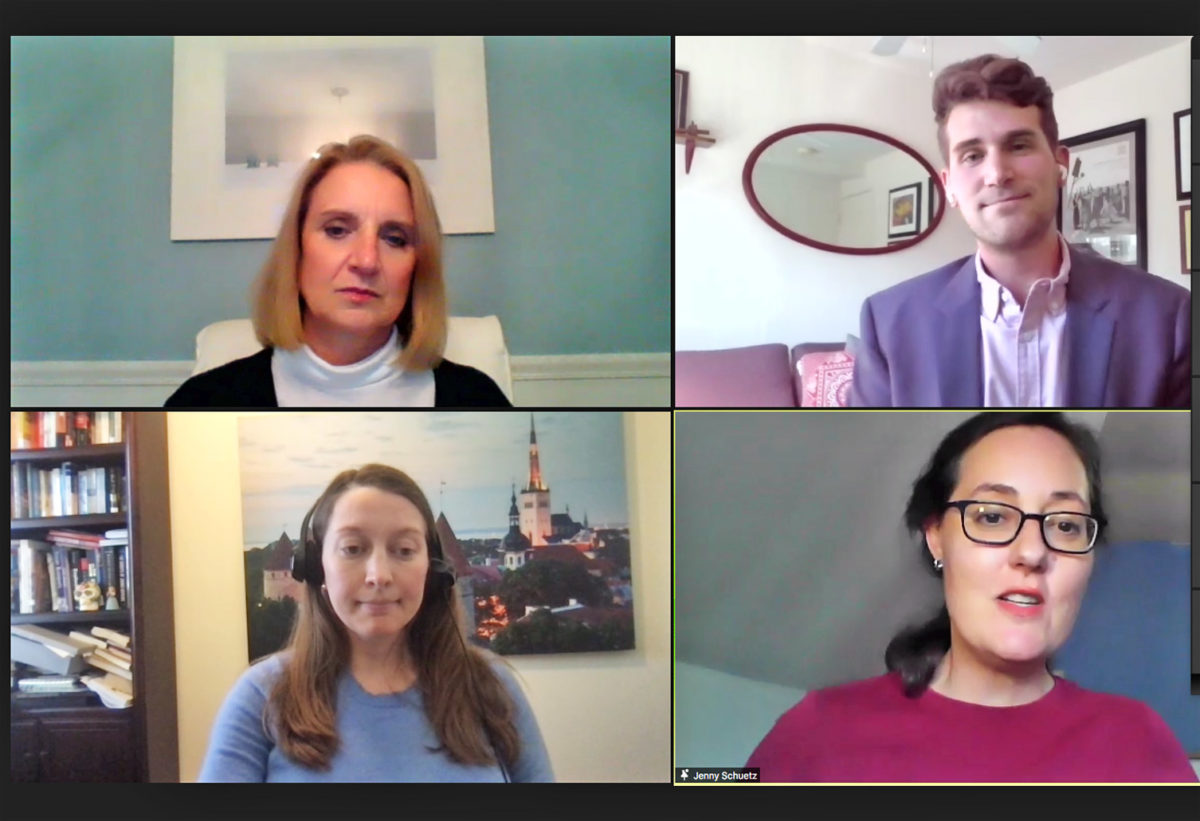Desegregate CT renews push for alterations to zoning laws

The issue of affordable housing ”” particularly controversial Senate Bill 1024 ”” is continuing to draw battle lines between those who feel reform has long been needed and those who essentially feel things are more or less fine as they are.
As originally written, SB 1024 would have required municipalities to allow the construction of mixed-use developments with at least four apartments within a half-mile of transit stations (the transit-oriented development or TOD option) or a quarter-mile of commercial corridors, designated as “Main Streets” ”” without developers needing to seek approval from local planning and zoning.
The TOD and Main Street portions were removed from the bill by the state Planning and Development Committee earlier this month; it is now with the Office of Legislative Research and the Office of Fiscal Analysis.
But Sara Bronin, founder and lead organizer of DesegregateCT ”” the group that has been pushing for passage of the legislation ”” said at an April 1 press conference that her group would continue to seek inclusion of those portions, a statement she reiterated at an April 15 online forum hosted by the group.
Restoring those provisions would be “a smart way” to rehabilitate those areas, as well as further support small businesses located there.
“We have six short weeks to really make some progress,” Bronin said, referring to the state legislature”™s scheduled adjournment on June 9.
To that end, the group is holding a series of virtual meetings with communities around the state, including Ridgefield on April 29 and Darien on May 6.
Objections to SB 1024 and similar bills aimed at providing more affordable housing to lower-income families have centered on the belief that such legislation would be an overreach on the part of the state, which would mandate that municipalities receive direction from it and thus lose their ability to shape their own communities.

Bronin cited two legal precedents she said prove that municipalities do not, in fact, have those rights. The so-called “Dillon Rule” issued in Iowa in 1868 holds that local governments have no inherent powers, while the ruling by the Connecticut Supreme Court in 1995”™s Moore v. Ganim lawsuit said that “municipalities in Connecticut have no independent authority or independent responsibility; they are administrative units of the state and can do only what the state authorizes or delegates them to do.”
As for another argument against SB1024 ”” that its passage would establish a “one size fits all” approach to zoning ”” Bronin argued that Connecticut already has such an approach, with single-family housing on large lots the rule rather than the exception in most communities. As proof, she offered data from the CT Data Collaborative that showed that 90.5% of the housing in the state is single-family “as of right.”
The latter term refers to a zoning ordinance that specifically permits a proposed use and development of land without the imposition of special conditions or discretionary approval from local zoning officials.
In addition, Bronin dismissed as a “myth” that SB1024”™s passage would hurt single-family homeowners. Instead, those homeowners can make additions to their existing homes or properties and become landlords for extra income ”” increasing property values by up to 50%, she said ”” while towns would still be able to regulate architectural standards.
“We”™re stuck in a 1950s mindset in the year 2021,” Bronin said. “We need more housing and more variety” to appeal to prospective residents.
To bolster her case, she cited data showing that construction of multifamily units in Rhode Island from February 2020 to February 2021 was up by 450%. Minneapolis during the same period recorded a 78% increase, while the U.S. as a whole saw a 17% rise. Connecticut recorded a 30% decrease, she said.
Bronin also indicated that Gov. Ned Lamont is presumably in favor of DesegregateCT”™s efforts by noting his appearance at an April 10 dedication ceremony for the financial closing of the second phase of a the rehabilitation of the 42-unit Armstrong Court development in Greenwich.
“As I tell folks who sometimes get a little edgy about affordable housing, I like that the people who work in my town can afford to live in my town,” Lamont, a Greenwich resident, said. “That”™s called community and that”™s what makes a community special. Connecticut is trying to do the best we can there, and Greenwich has really taken the lead.”
”˜Segregation a problem in Connecticut”™
In a subsequent panel discussion, Evonne Klein, interim CEO of the Connecticut Coalition to End Homelessness and former first selectwoman of Darien, said the current zoning statutes are representative of “deliberate decisions (that) were made (in) a concerted effort to segregate our state.”
After Klein, who also served as the state”™s commissioner for housing, said that, “Segregation is a problem in Connecticut,” Jenny Scheutz, a senior fellow in the Metropolitan Policy Program at Brookings, noted that while “segregation” is often thought of in racial terms ”” something that is illegal ”” some practices can be viewed as economically segregationist, such as the housing situation in Connecticut.
As an example, Scheutz said that with minimum lot sizes needed for single-family homes ”” some as large as 4 acres ”” the resultant prices become prohibitive for lower-income families, a practice she said “winds up separating people by race.”
While zoning does not intentionally lead to discrimination, it can still wind up being so, she said.
Another panelist, Emily Hamilton ”” senior research fellow and co-director of the Urbanity Project at the Mercatus Center at George Mason University ”” said that as a researcher she neither endorsed nor opposed legislation of any kind.
Still, she said, the current situation “puts Connecticut out of step with most of the country.” While a typical new construction project for a single-family home is on a lot of about 8,000 square feet, she said, “Connecticut requires 40,000 to 80,000 square feet, which can really constrain the housing supply and makes it much more expensive than it needs to be.”
Klein added that for developers, the costs of “going back and forth” to planning and zoning hearings with attorneys could be alleviated by the passage of legislation like SB1024, and free up “money that could be better used for development.”
DesegregateCT”™s supporters include the Sierra Club, Preservation Connecticut, Fairfield County”™s Center for Housing Opportunity, the Connecticut Coalition to End Homelessness and dozens of others.
